the REST of the pictures on this page will give you a better overall feel for this wood
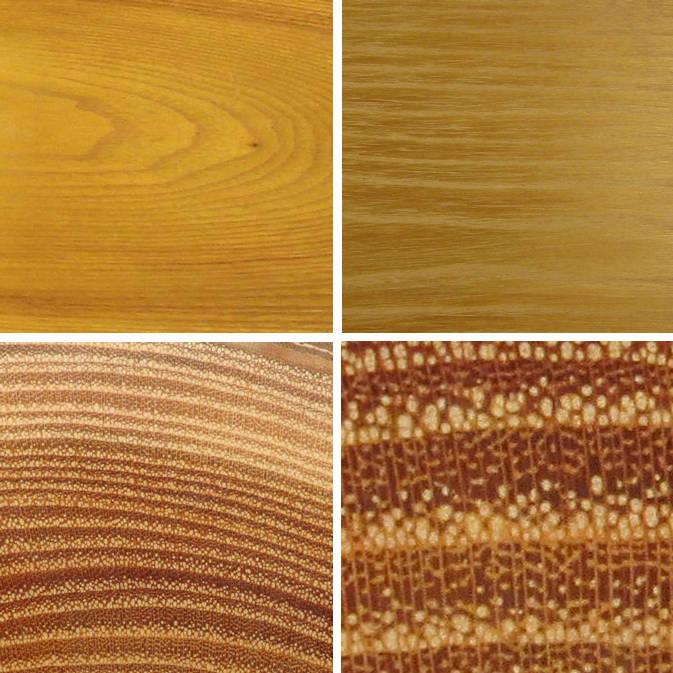
| osage orange / Maclura pomifera (synonyms Toxylon pomiferum and Maclura aurantiaca) 5" x 5" flat cut, 3" x 3" quartersawn, 1" wide end grain, and a 1/4" x 1/4" end grain closeup. Ring porous with a thick row of large and medium sized earlywood pores followed by a row or two of medium sized pores and then dropping off to very small pores which begin to have noticeable confluence halfway (or so) through the latewood. Rays are obvious at 10X and growth ring boundaries are very clear. In the SouthWest, where this wood is native, it is often called by the French name bois d'arc or the American bastardization of that, bodark. It is also called hedge because it was used for hedgerows. The beautiful yellow color, sadly, does not last.  |
NOTE: these pics were all taken in very bright incandescent lighting ("soft white" at 2700K) colors will vary under other lighting conditions |
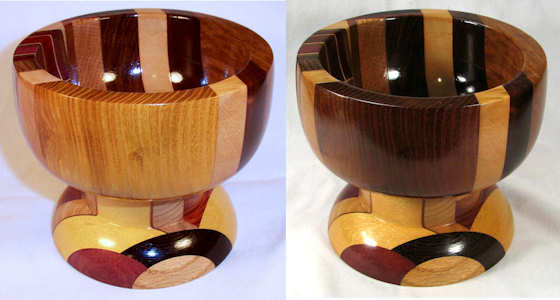
an example, using one of my segmented bowls, of how osage orange turns brown over time. The pic on the left was when the bowl was newly finished with 3 heavy coats of brushed-on polyurethane with UV blocker and the pic on the right is after 8 years of sitting on a shelf in a room that has only a small amount of direct sunlight for a short time each day but that has windows open all day to indirect sunlight. As you can see, some of the other woods have also darkened, but nothing like the osage orange. The current color is a rich chocolate brown and the piece has lost none of its chatoyancy. Note the yellowheart in the lower left, which has hardly darkened at all.

another color-change example in osage orange from my turned objects. Again about 8 years of very indirect sunlight making totally useless the application of several coats of UV-blocking polyurethane.
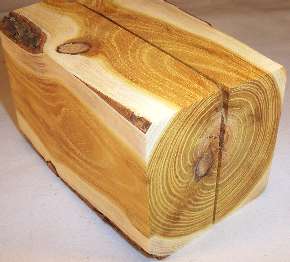
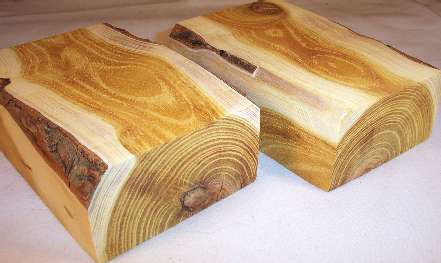
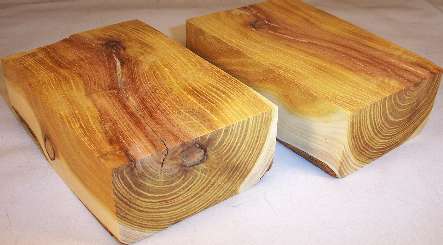
three views of a pair of slabs that were cut from the same section of a small tree --- this is a perfect representation of this species' wood, as it shows the usual grain pattern, the typical color, heartwood/sapwood comparison, a little bark, and even the heart checks which are quite common to the species --- both levels of enlargement are available for all 3 pics. Both pieces are freshly sanded (when I got them on eBay, they arrived waxed, but I sawed off 1/8" from all surfaces, and then sanded them down for the pics.
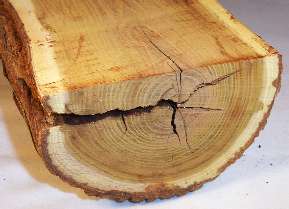
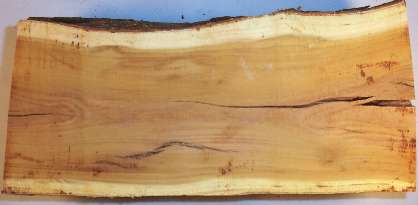
a log section (cut planks from it are directly below) --- this one is rough surfaced
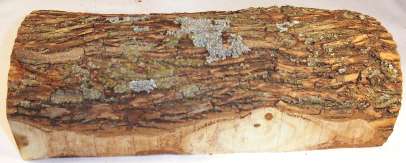
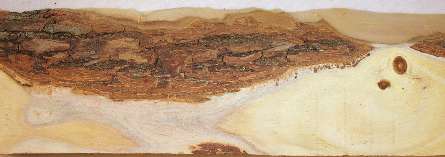
outer view --- on the closeup, note the bright white layer that is just under the bark
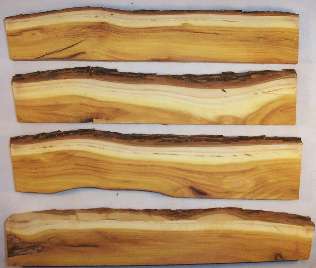
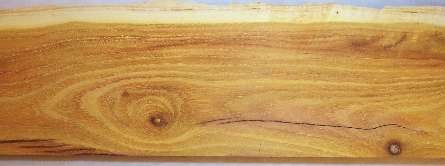
some planks cut from this small log. On the right is the reverse side of the section directly above that shows the white layer under the bark.
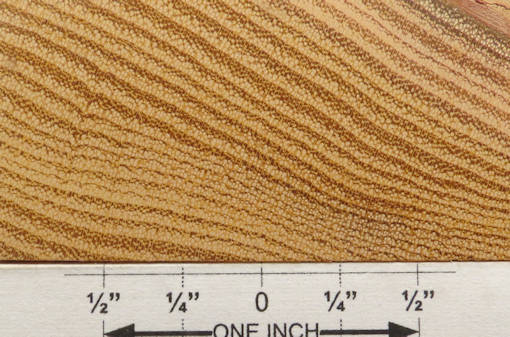
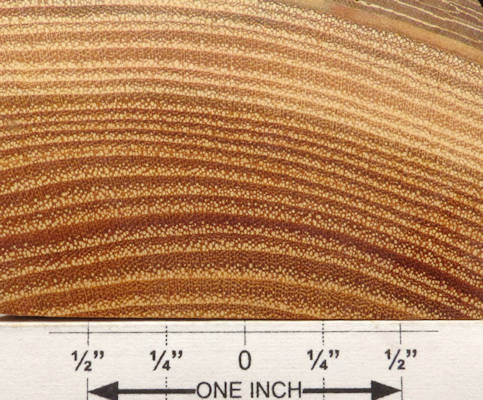
END GRAIN UPDATE from each of a couple of the little planks directly above

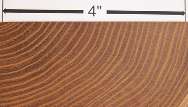
The first one has been sanded with 120-grit, prior to which it looked just as yellow, only rougher, so the sanding did not enhance the color as it does with some woods. The 2nd one is end grain and has been long exposed to the air, showing the typical darkening of the species (the darkening is more pronounced on the end grain than on surface grain). When I got this piece (maybe 15 years ago), the end grain wasn't this dark. The end grain on the first piece has closer growth rings and is considerably lighter in color than the 2nd piece. No color correction has been used here, but the colors are quite accurate.
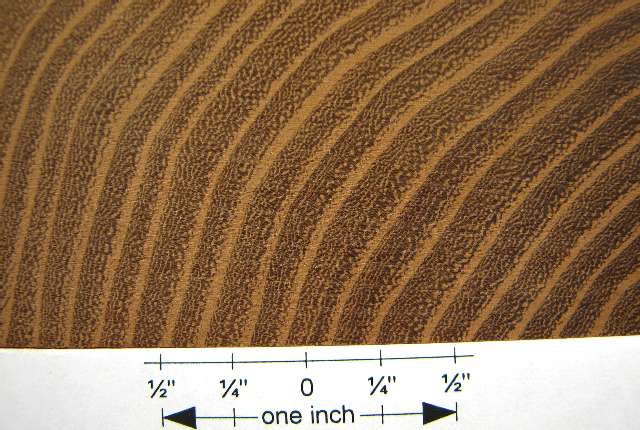
end grain closeup of the right-hand piece directly above
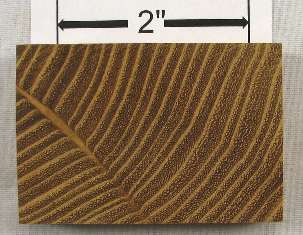
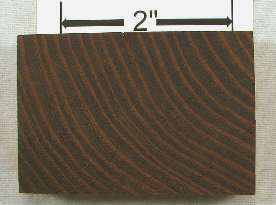
both sides of a little cut-off that sat around my garage for about 10 years. The lighter surface is freshly sanded but is only about 1/4" on the other side of the dark surface, which is the 10-year-old exposed surface, so I don't consider the lighter side to be "freshly cut" at all. The dark surface was never in direct sunlight, so you can see what even indirect sunlight can do to the color of osage orange with time (and a UV blocker won't stop the process, just slow it down). The very dark color shown here is quite accurate.
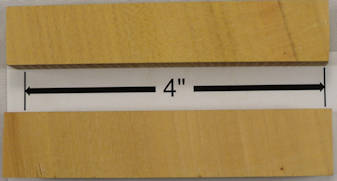
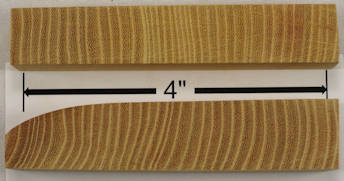
face grain surfaces and then the end grain surfaces of each of a couple of little osage orange cutoffs contributed to the site by Cliff Wiener, whom I thank for this and other contributions to the site. HUGE enlargements are present
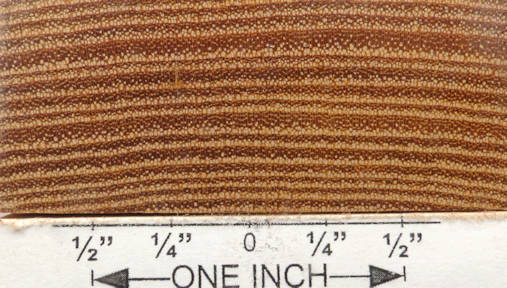
END GRAIN UPDATE from a plank somewhere on this page, done because I needed another sample for the anatomy pages.
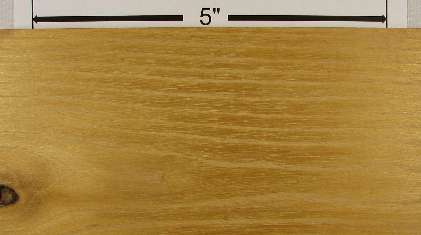
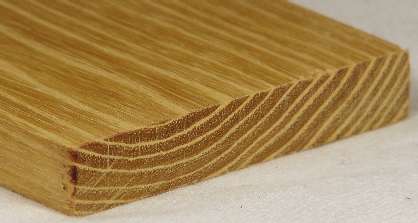
sample plank and end grain. The color in these pics is a bit too neon yellow ... there should be a bit more red and less green
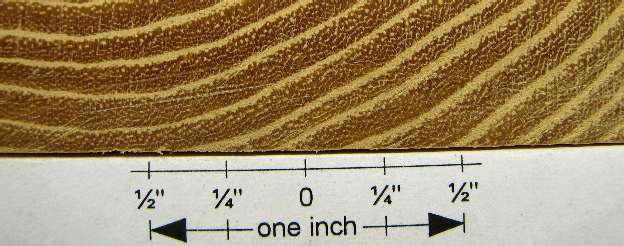
end grain closeup of the piece directly above
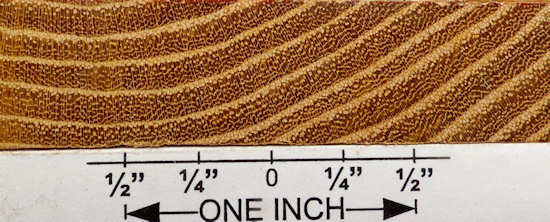
END GRAIN UPDATE from directly above --- the pics above were taken when the sample plank was new and this update was taken at least 8 years later and that accounts for some of the change in color more towards brown.
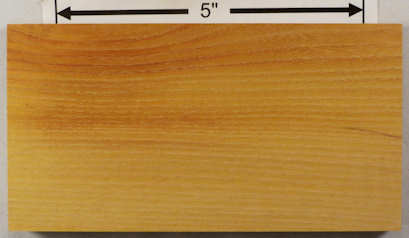
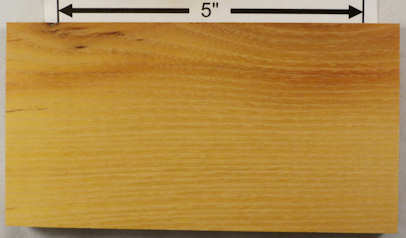
From one of the larger planks shown somewhere on this page, I made this "formal sample" sized piece to give to a friend. HUGE enlargements are present
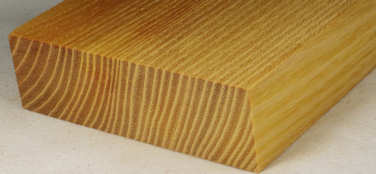
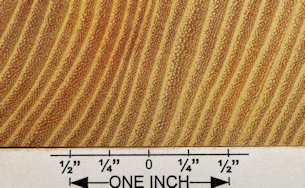
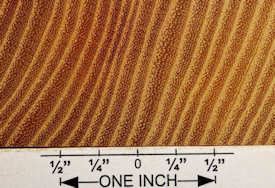
end grain, end grain closeup, and END GRAIN UPDATE of the piece directly above

end grain of a big turning block very generously donated by Chris Arvidson --- the end has been waxed but that does not have a significant impact on the color of this species.
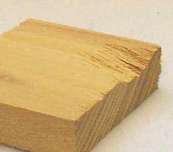
a small example of the kind of chip-out that occurs with osage orange if you don't use sharp blades and/or a backing block during cutting.
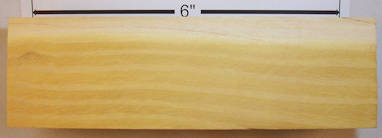
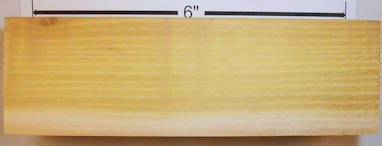
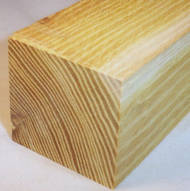
two sides and end grain of a turning stick that has been rough sanded and has a small amount of sapwood at one edge
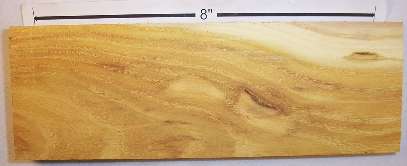
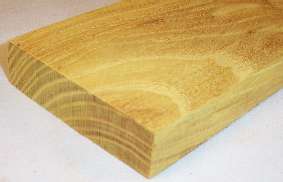
small plank and end grain, both freshly sanded
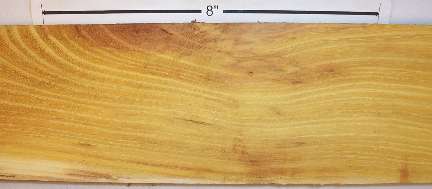
small plank, freshly sanded

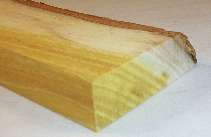
edge cut-off plank with sapwood and bark, and an end-grain shot of same, both freshly sanded
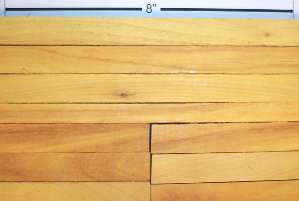
a set of small sticks --- color is accurate
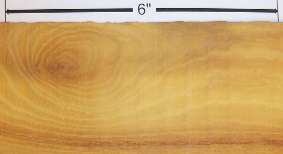
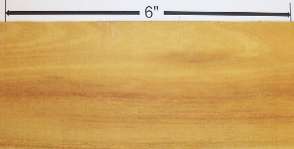
a couple of samples from a set of thins I bought. The color is accurate but these are rough surfaced and would appear slightly more yellow (and less gold) if fine-sanded.
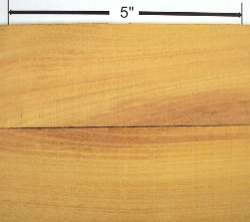
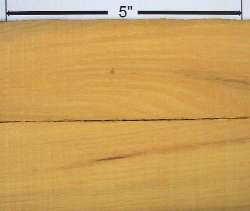
more thins from a different vendor. The color is accurate but these are rough sanded and the yellow brightens up considerably with a good sanding. These are from the vendor whose pictures below show an unrealistically BRIGHT yellow, and these samples are from the 3rd lot pictured below
A bunch of pictures of an excellent plank that shows osage orange very nicely. This plank is 3 feet long, 8" wide and 3/4 inches thick, for a nominal size of 2BF and cost $10, or $5/BF which is a very good price (unfortunately the shipping more than doubled the total, but that's life). The color in all these pictures is very accurate but the spotlights brightened up the end areas way too much.


both sides
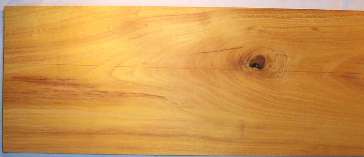
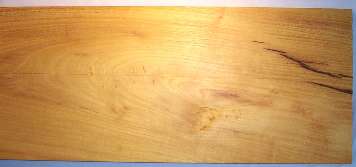
closer pics of side 1
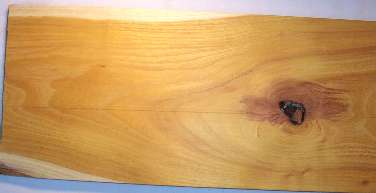
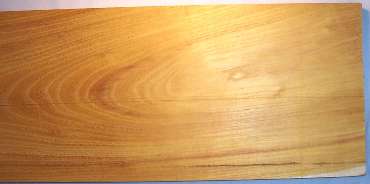
closer pics of side 2
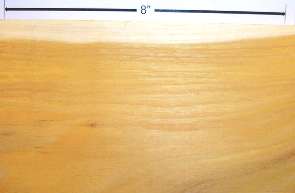
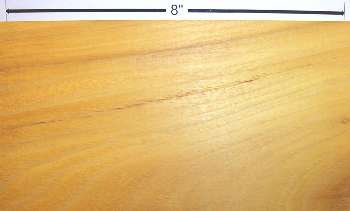
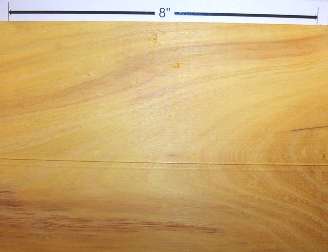
some closeups of a few areas including one that has some sapwood.


end grain
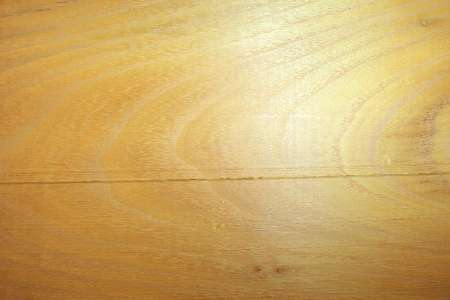
closeup of a cathedral grain area; for this pic I've gone all the way to the 2nd enlargement, just to show an extreme closeup of the grain. The line through the middle is a raised area where the vendor's surface planer was nicked
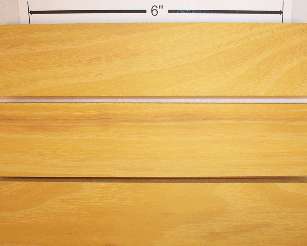
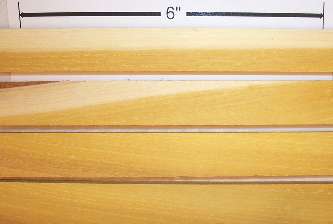
some freshly exposed small pieces from the plank described directly above. As you can see, there is essentially no difference in color (although there might have been a little, had the plank been exposed for a considerably longer time).
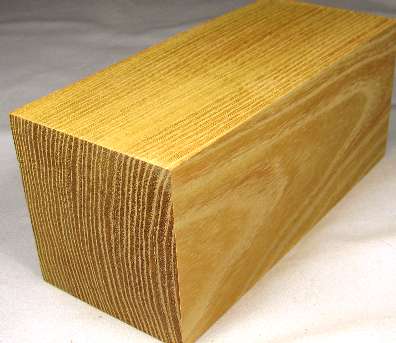
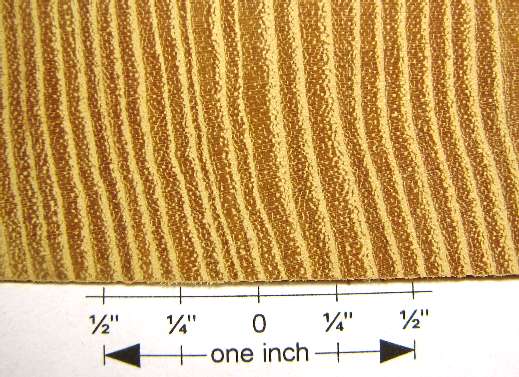
small turning piece and end grain closeup
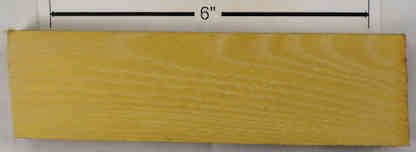
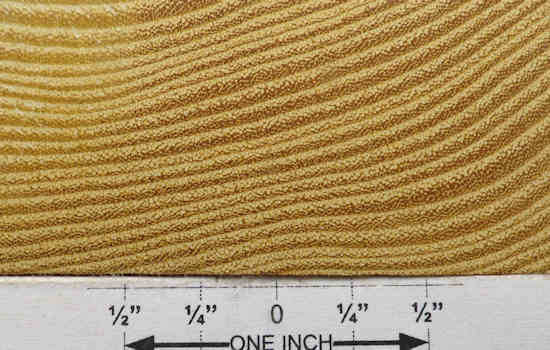
small plank of osage orange / Maclura pomifera and a HIGH GRIT END GRAIN CLOSEUP of it

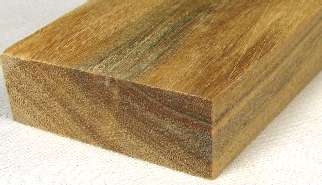
Plank and end grain --- the color on this one is, in my experience, unusual --- seems to have either a mineral stain or spalting and if you look at the end grain closeup, you'll see that it is also quite different than the other end grain closeups on this page. It came in a batch of osage orange, but I'm very doubtful that this actually is osage orange
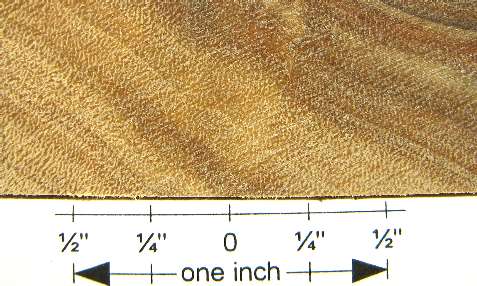
end grain closeup of the piece directly above

another piece similar to the one directly above
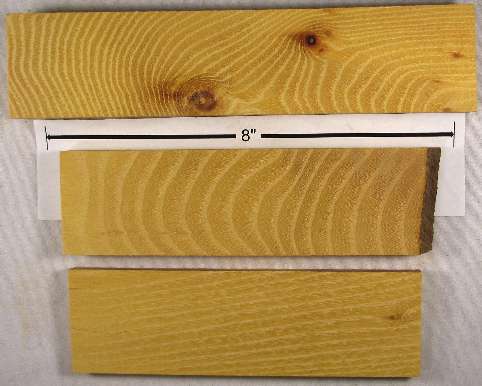

small planks and end grain. Took this set mainly to show the two nice flat cut pieces with the high grain pattern. The end grain shot in particular looks much better in the enlargement.
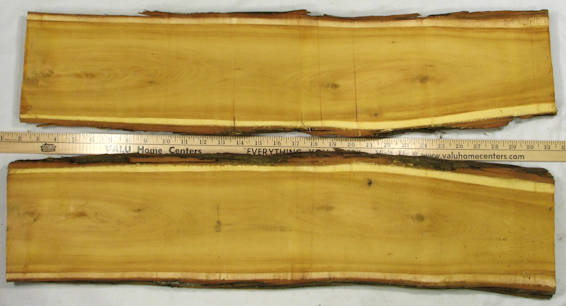
first two of a set of 6 planks that I bought semi-green. I usually don't by wood that has not been fully dried, but this was such beautiful set and at a bargain price so I just couldn't pass it up. With about 20% moisture, and considering that it's a heavy wood to start with, these planks are HEAVY.
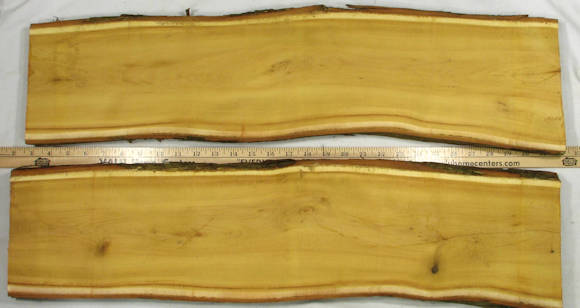
second set of 2 planks of the 6 mentioned above
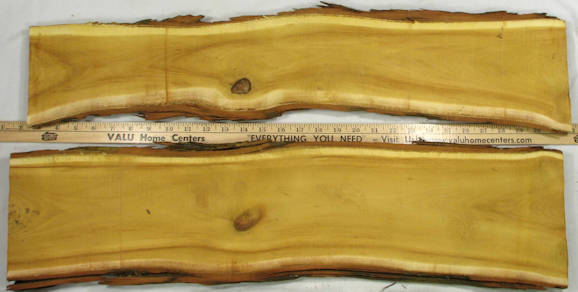
third set of 2 planks of the 6 mentioned above
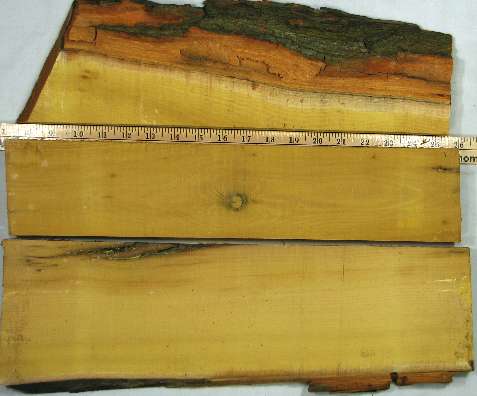
a set of green planks --- actual color is slightly more yellow than in this pic
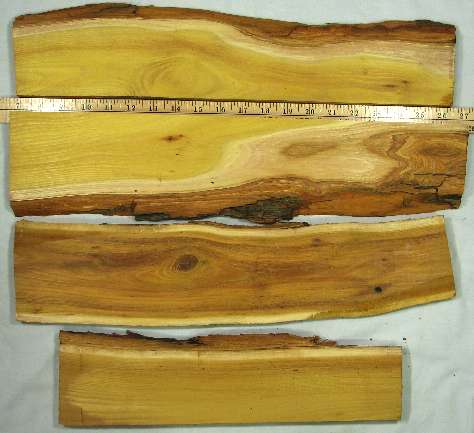
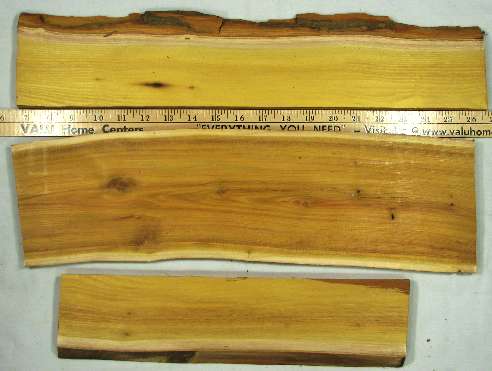
misc planks showing some of the color variety you can get in this wood and also showing the bark, which is orange on the inside
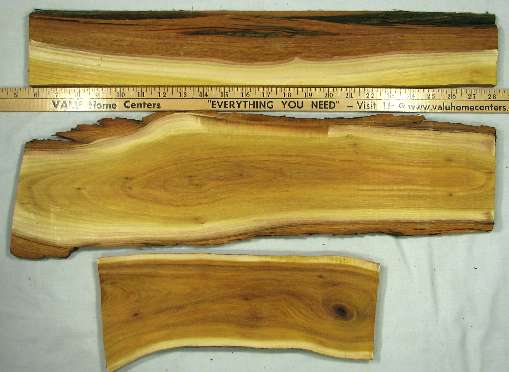
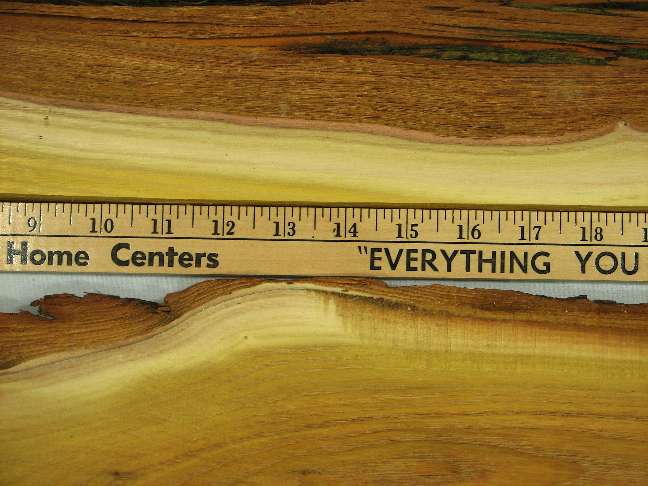
planks and a closeup
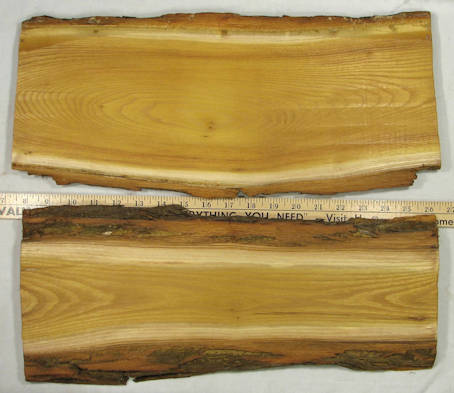
planks
The Wood Book pics
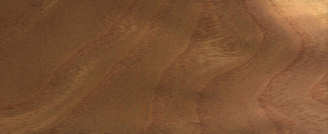
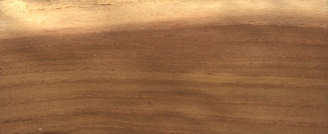
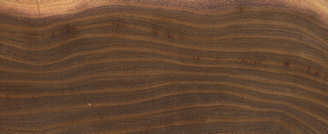
flat cut, quartersawn, end grain
osage orange (Toxylon pomiferum) from The Wood Book --- both levels of enlargement are present for all 3 views.
Definitely a case where the samples used for these images has darkened considerably over time
NOTE: some of these were specifically labeled as Maclura pomifera but since that's ALWAYS what osage orange is, I did not make a note of it as I do with woods that include more than one species.
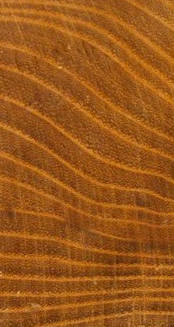
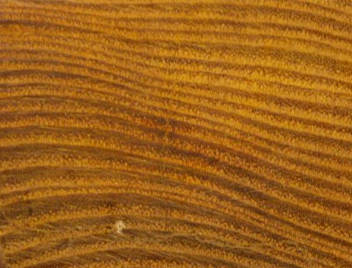
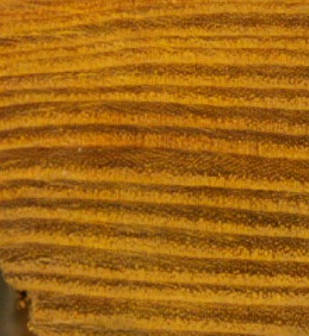
end grain shots
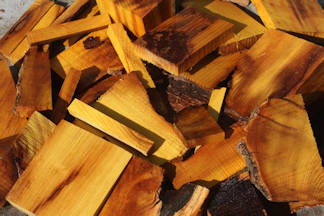
cutoffs --- both levels of enlargement are present and I think the color is a bit over-saturated
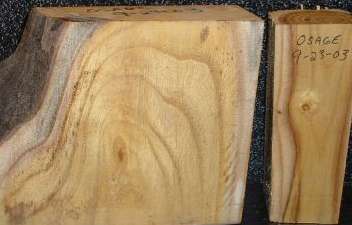
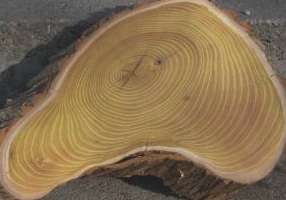
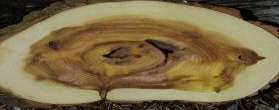
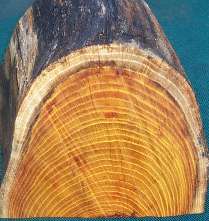
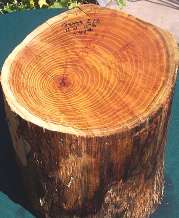
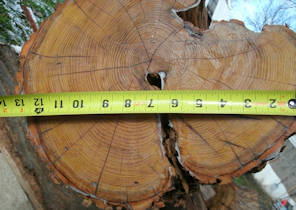
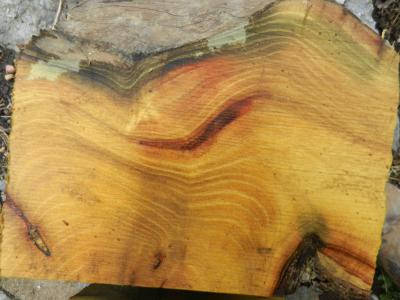
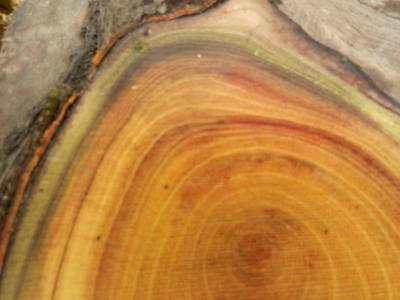
log sections
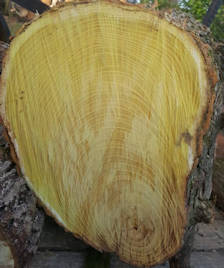
log with an amazingly off-center pith.
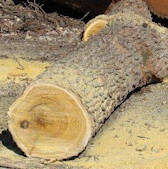
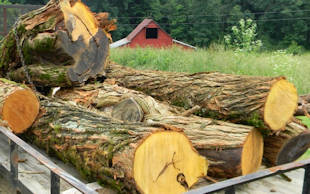
freshly cut logs

this is the vendor's pic of the plank that I have a bunch of pics of up above. To my mind, this board could have been shown to better advantage than it is here, and that's a sign that this is an honest dealer who just doesn't take the time to optimize his pics.
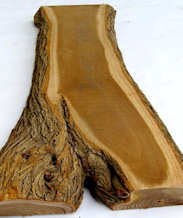


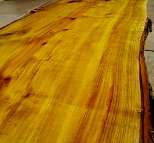
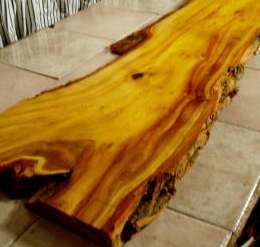
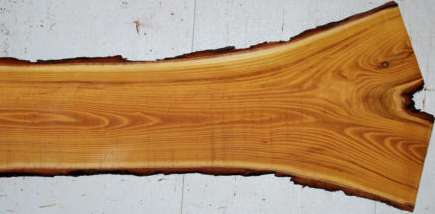
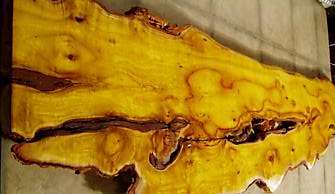
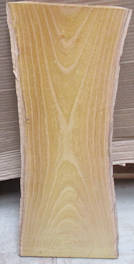
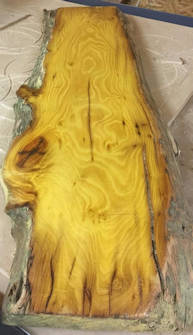
slabs
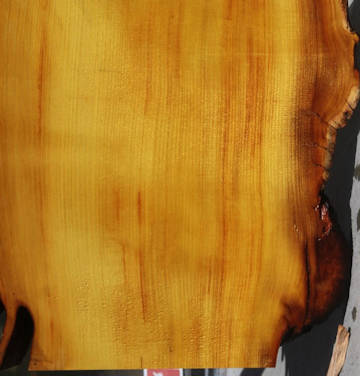
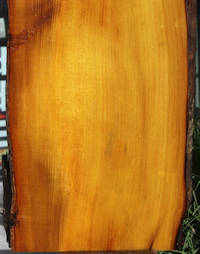
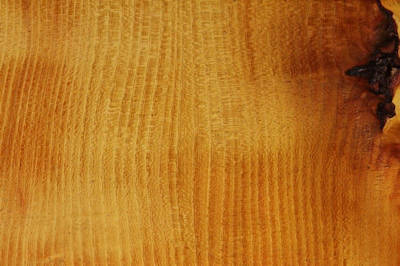
two quartersawn slabs and a closeup of a 3rd
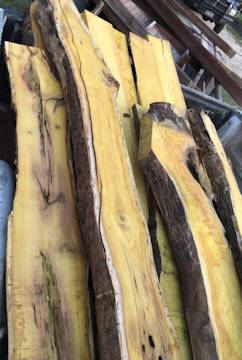
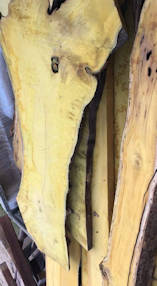
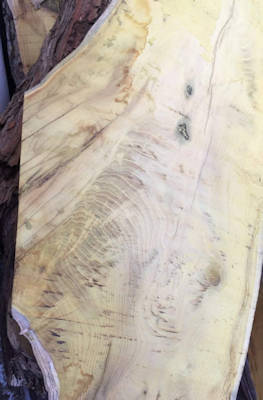
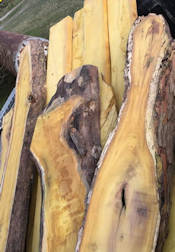
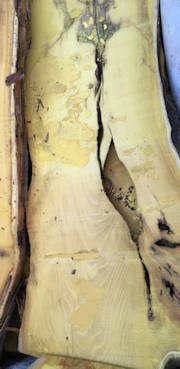
freshly milled slabs
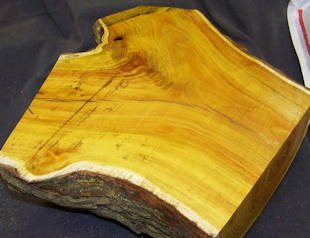
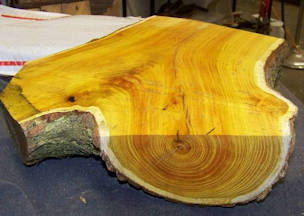
two views of a freshly cut crotch slab
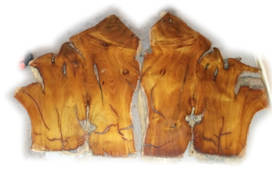
stump slabs
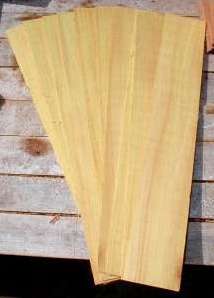
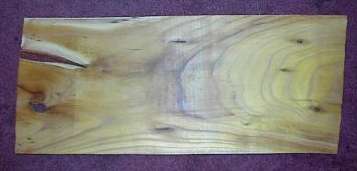


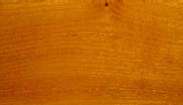


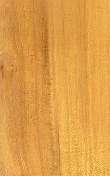
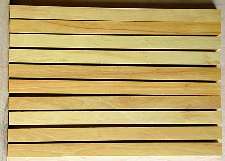
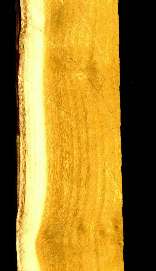
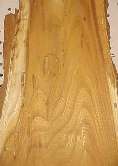
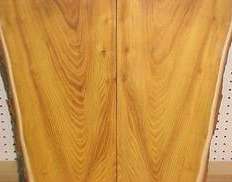
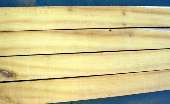
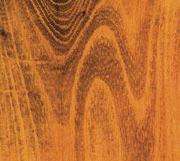
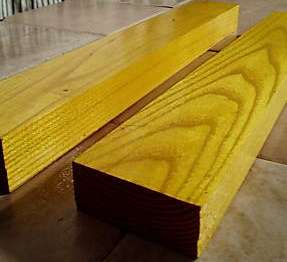
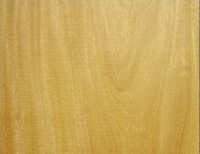
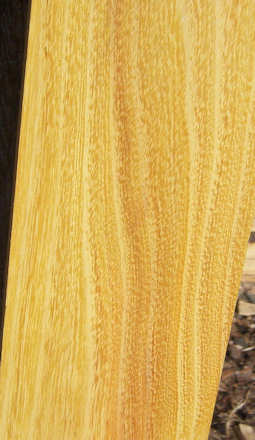
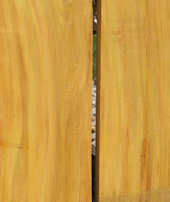
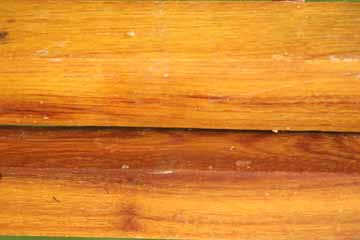
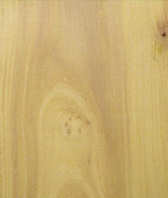
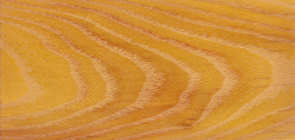
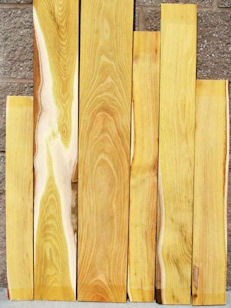
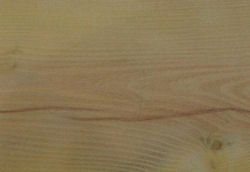
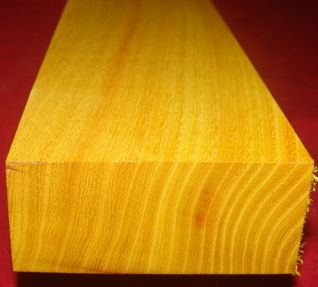
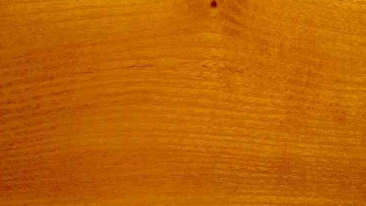
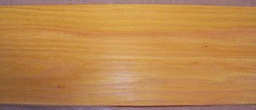

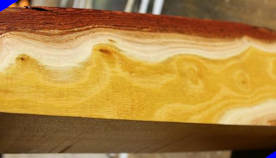

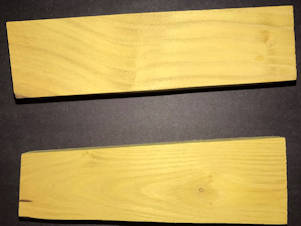
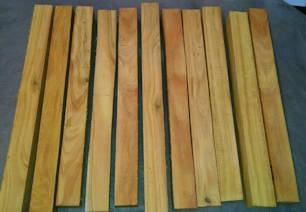
planks
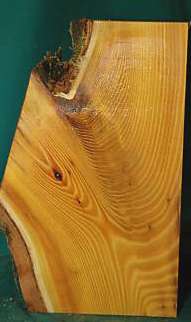
crotch
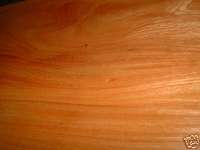
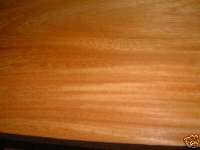
a couple of closeups that are just too orange to be believed

a plank with a yellow that is too bright a color to be believed
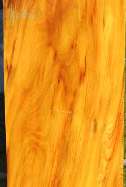
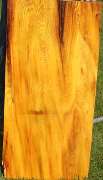
both sides of a plank --- these pics are from the BogusColorVendor and the colors are WAY too intense, as is typical of this dishonest vendor. There is also very likely way too much orange in the color of these pics.
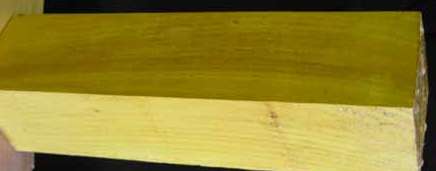
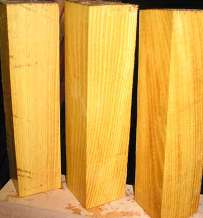

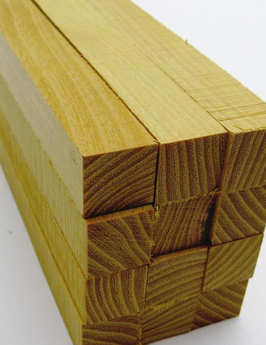
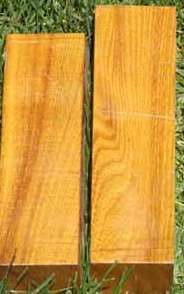
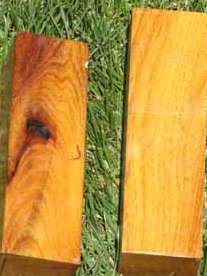
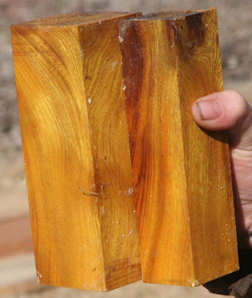
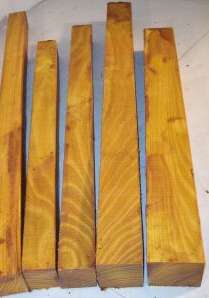

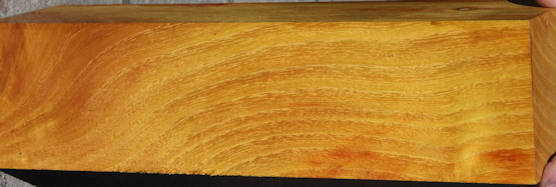
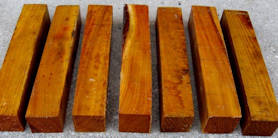
turning stock; the green color in the first one is likely the photography, not the wood
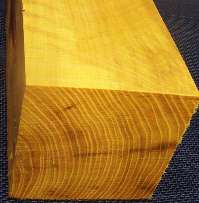
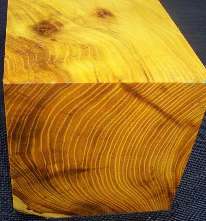
turning stock showing the strong grain pattern that can make this wood so attractive (in addition to the beautiful color)
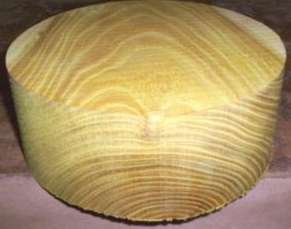
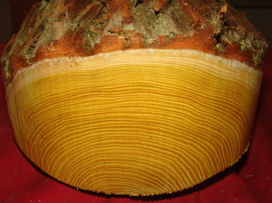
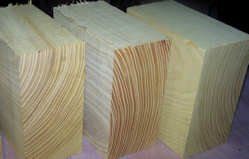
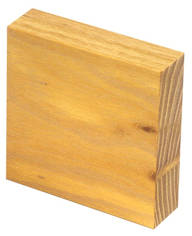
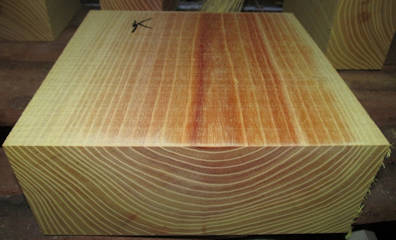
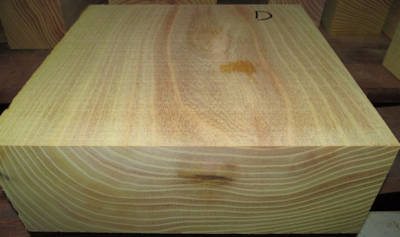
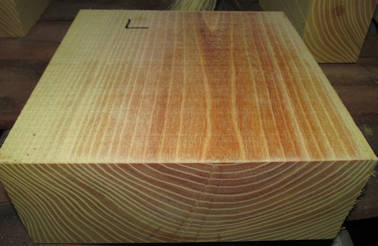
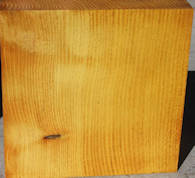
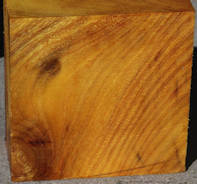
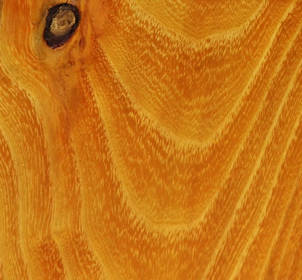
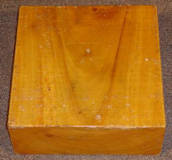
bowl blanks
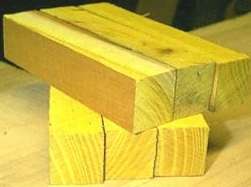
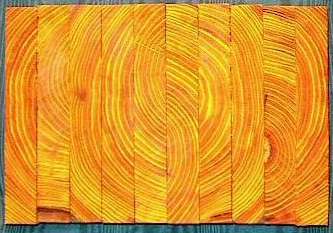
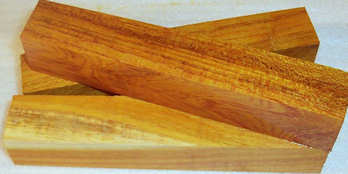
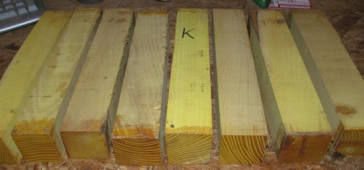
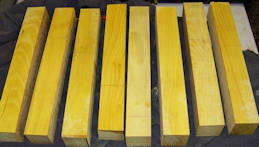
pen blanks
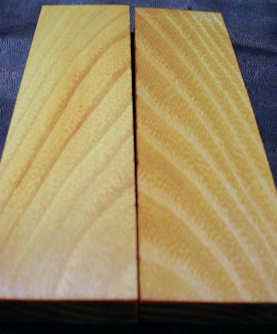
scales
%20s25%20web.jpg)
end grain scales
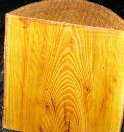
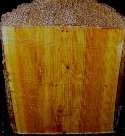
log sections
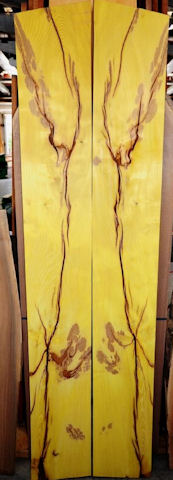
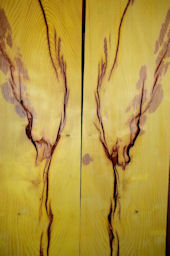
bookmatched slabs and closeup (closeup has both levels of enlargement) --- this shows the kind of cracking that is common in osage orange
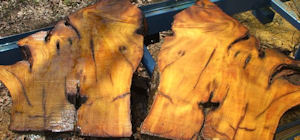
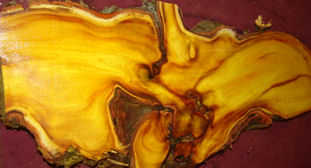
stump slabs
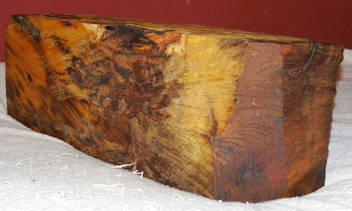
burl
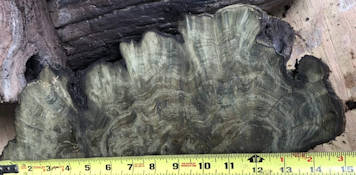
green colored "mud cured" osage orange. This piece is an example of a fairly rare situation where osage orange sinks into mud and sits there for a long time (decades) and turns green.
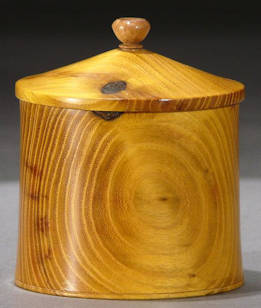
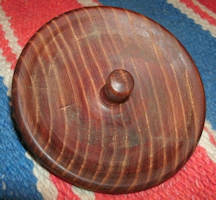
turned box and the top of a different turned box showing the browning with age of osage orange

mallet
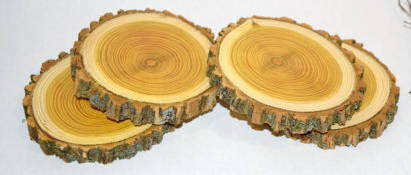
coasters
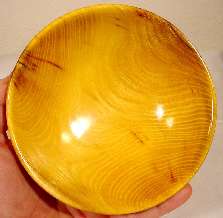
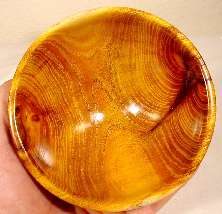
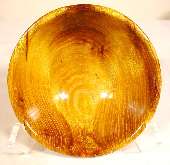
bowls by Bryan Nelson (NelsonWood). Bryan fine-polishes his bowls with 1200 or even higher grit sandpaper while they are spinning at high speed on the lathe and then finishes them there with a friction polish of his own devising, thus achieving a shine and color vibrancy that is beautiful to behold. These bowls are all about 5" across.
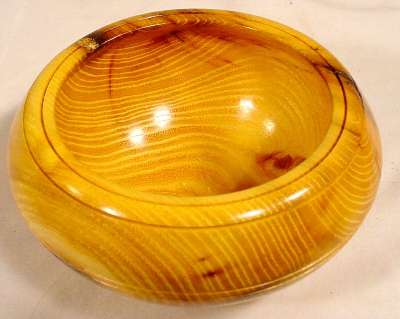
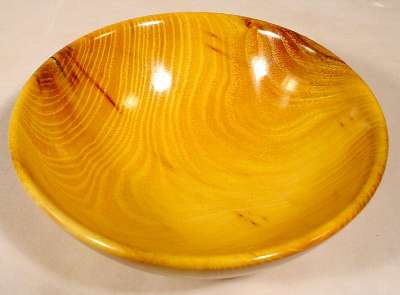
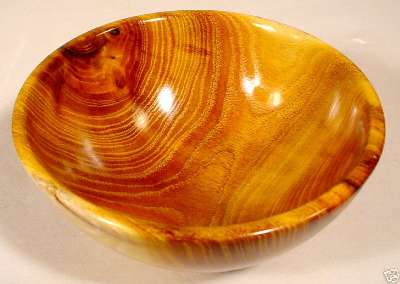
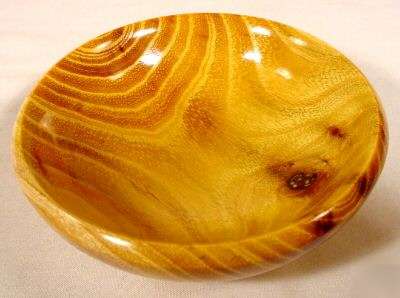
more bowls by Bryan
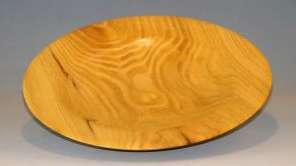
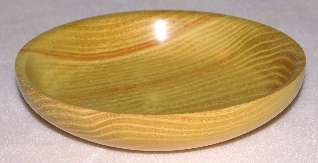
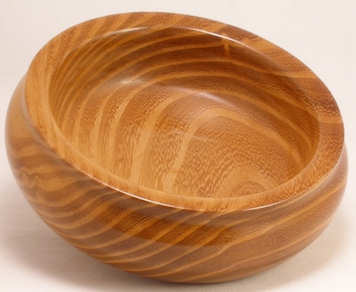
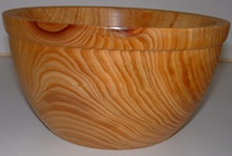
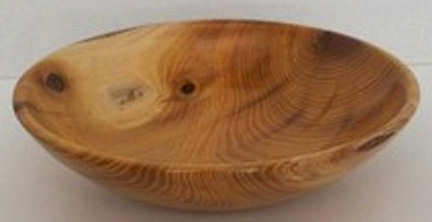
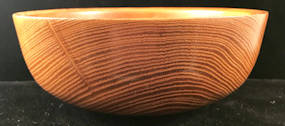
bowls
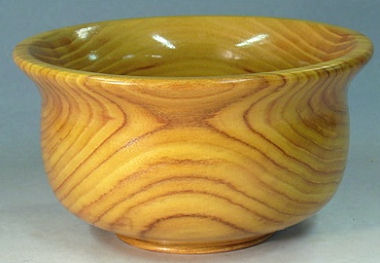
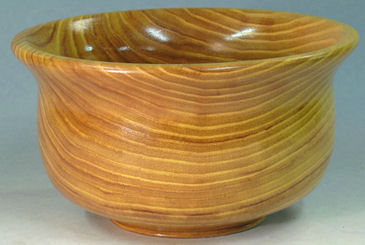
two views of the same bowl
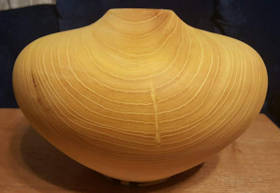
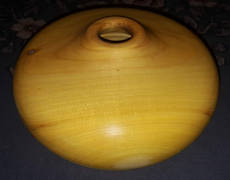
two views of an osage orange hollow form; check out the enlargement of the first view. The grain looks like a multi-strand necklace
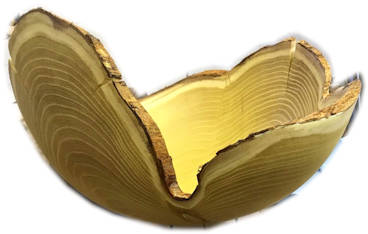
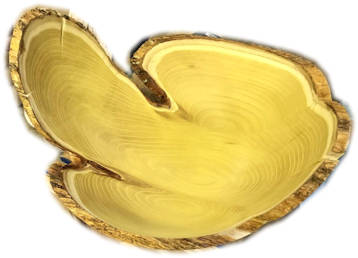
two views of a very nifty natural edge bowl fresh off the lathe (and so still retaining the bright yellow color)
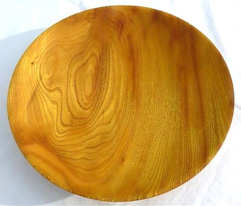
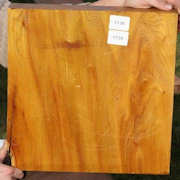
14" shallow bowl by Steve Earis and the blank it was turned from
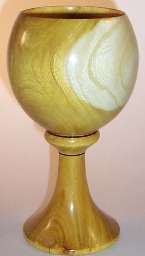
goblet
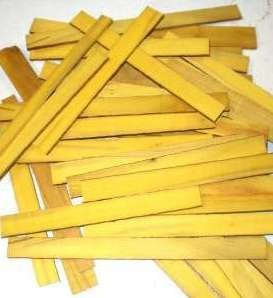
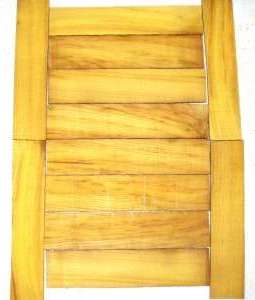
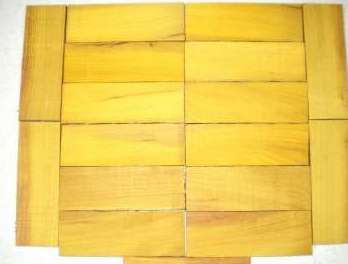
these last 3 pics are from the same vendor, and it is NOT the BogusColorVendor although this vendor also consistently posts pictures on eBay that show wood as being more attractive than it really is. Some of my own samples above were take from the 3rd lot and as you can see, the wood is NOT this bright by quite a stretch.
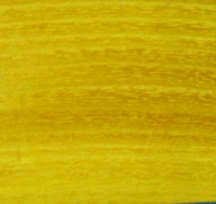
this one IS from the BogusColorVendor and clearly shows why I contend that in terms of dishonesty/stupidity in wood representation, they are in a class all by themselves.
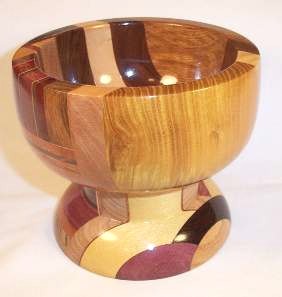
a big chunk of osage orange as a highlight on a laminated bowl. This piece was more of a bright yellow when purchased but as you can see, it has changed to a more mellow yellow, accurately shown here. HA ! --- see the top of this page; this piece has changed since the pic directly above to a chocolate brown.
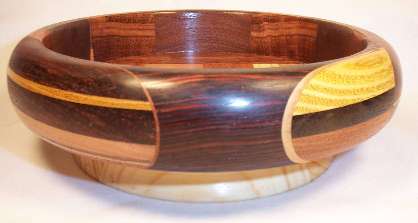
osage orange highlight on a turned bowl. the bright yellow color is accurate. The center wood is cocobolo, and just to the left of that, the thin yellow wood is also osage orange --- the much darker color is accurate (it is from a different lot).